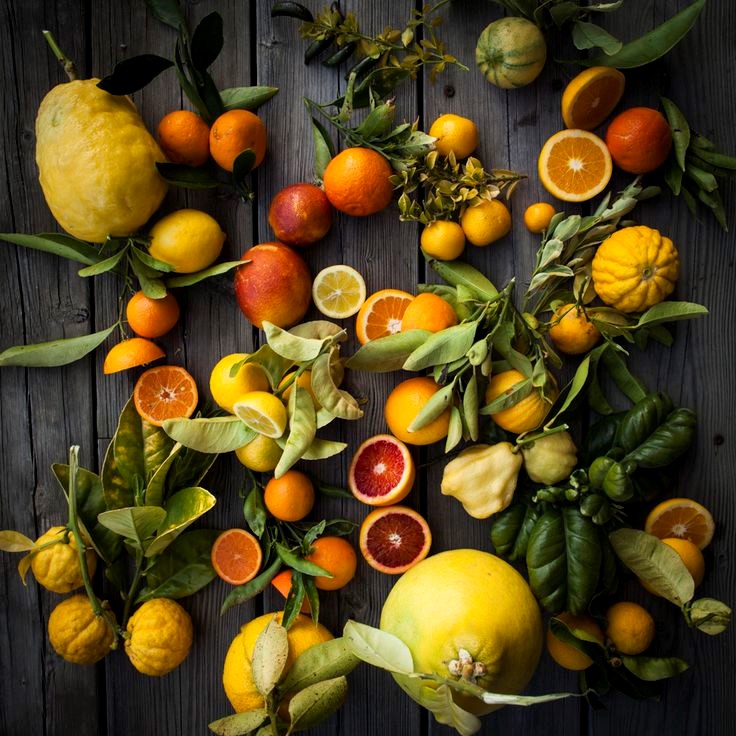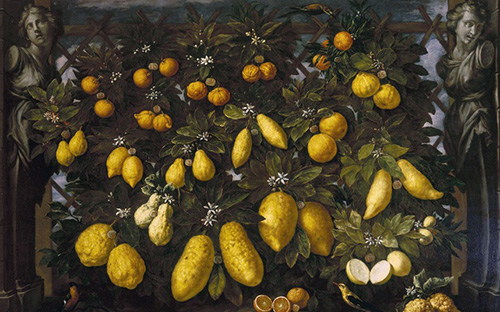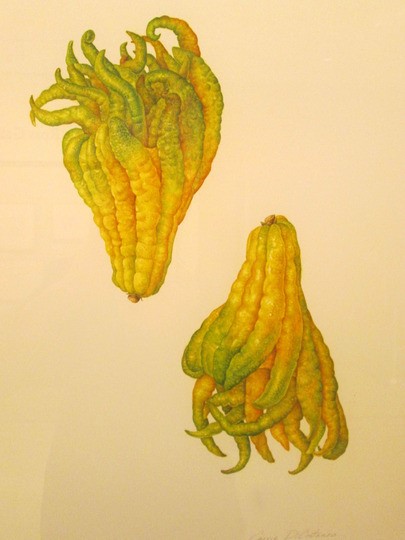
July 2015 Issue number four/Citrus: A Family Portrait by David P
Every family is unique. Often scattered across the globe, cousins might be familiar but diverse branches are made up of entirely distinct members. Complex and informed by long histories it is often difficult to determine how they evolve into the way that they are. And it is a phenomenon as true for people as it is for plants.
“Wherever citrus trees are gathered together, whether in open ground or in the shelter of a limonaia, they cross pollinate and over time varieties develop that are peculiar to their setting’ writes the Helena Attlee in her book The Land Where Lemons Grow (2014). Attlee, an expert on grand Italian gardens, wrote the book after decades of studying the curious biodiversity of the citrus family on the Italian peninsula. Although it may seem as though Italy is citrus’ spiritual home, the family originally hails not from Amalfi or Sicily but Asia. No one historian or botanist can pinpoint its exact roots but it seems wherever citrus finds favourable conditions, it flourishes.

Last month members of the extended Spring family took a trip to Sicily, staying amongst an immense grove of lemons at the foot of Mt Etna. It was the first trip to the island for many and all were struck by the availability and variety of citrus. Even in summer the trees were thick with fruit and abundant in the market. For instance, what appeared to be a gnarled large lemon was instead a small cedro, a variety that is typically candied but with its sweet, fragrant juice instead added a surprising new note to dishes. Come winter, as the rest of Europe freezes, in Sicily, it is the moment that blood oranges, mandarins and clementines arrive. And we, by extension, are able to enjoy that jolting, zesty gift of vitamin-c to sustain through the cold.
Over time citrus have a way of taking on a regional identity, perhaps more than any other fruiting botanical family. Across the straights of Messina in Calabria the slopes of the Aspromonte Mountains are perfumed by prized bergamot, further up the coast Amalfi is festooned by its signature lemon and even beyond in Liguria, the slopes of the Cinque Terra are planted with the tiny bitter orange chinotto. However it is not only Italy where citrus has settled and integrated itself into the landscape and daily life. What would the nuance of Thai cuisine be without the robust Kaffir lime, Japanese without delicate Yuzu, the hybrid cuisine of California without the sweet Meyer lemon?

Beyond orange juice concentrate and the waxed-to-shine lemon of our supermarkets there still remains a world of citrus to discover. Seeking out and buying unconventional citrus is a joy and each brings something new. The curiosities of pixie tangerines, wonderfully weird Buddha’s hands and Australian indigenous finger limes are all enjoying a moment of rediscovery. One citrus may have tart juice, particularly potent rind or scented leaves but yet with all members of the family their enlivening pucker is constant.
In a first for Scroll we’ve included two recipes from the Spring family, the first Skye’s take on limoncello and Head Pastry Chef Sarah Johnson’s sublime lemon ice cream.
Skye’s Limoncello
In Sicily they traditionally make limoncello with the first harvest of the year – small, pale lemons with a deeply perfumed skin.
10 unwaxed, organic lemons
1 bottle of vodka
750g caster sugar
700ml boiling water
Wash the lemons and pat dry. Zest using the finest grater possible.
Place the zest in a sterilised jar and pour over the spirit. Seal the jar tightly and keep in a cool, dark place for 10 days. Shake the jar each day.
Place the sugar and water in a heavy based pan over a low heat, once the sugar has dissolved raise the heat to a boil and cook for a few minutes. Allow the sugar syrup to cool then add to the spirit and zest. Stir well to combine then return to a cool, dark place for a further week.
Strain and store in sterilised jars.
Sarah’s Lemon Ice-Cream
A Spring favorite. Sarah’s ice cream marries a pure lemon flavour with the richness of a traditional ice cream.
Makes almost 1L ice cream base
250ml milk
250ml double cream
Zest of 4 lemons
170g sugar
5 egg yolks
180ml lemon juice (4 lemons)
Combine the milk, cream and lemon zest into a pot over medium heat and bring to a simmer. Remove from the heat and allow to infuse for 15 minutes.
In a medium bowl, whisk the yolks and sugar until combined. Slowly pour the warm cream mixture over the yolks while whisking constantly. Return the custard to the pot and place over a low heat. Continuously stir until the custard begins to thicken slightly. Immediately remove from the heat and strain through a fine mesh sieve into a bowl. Allow to cool then cover and place in the fridge overnight.
When you are ready to churn the ice cream, remove the custard from the fridge and stir in the lemon juice. Churn in an ice cream machine according to the manufactures instructions. Enjoy the ice cream soft out of the machine, or transfer to an airtight container and store in the freezer.
N.B. Top Image, Eric Wolfinger for Manresa: An Edible Reflection